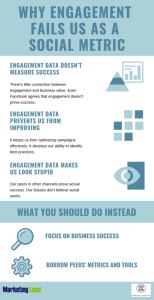by Gord Hotchkiss, Featured Contributor, (February 09, 2016)
Last week, I talked about the trend of “hyper” expectations and corporate valuations. Peter Fader, a marketing professor at the Wharton School, commented, “This is why we need to replace the guesswork of tech valuation with the more rigorous, valid, and operational notion of ‘customer-based corporate valuation.’”
I had a chance to look at Professor Fader’s paper on the topic. Essentially, he proposes a new model for the valuation of subscription-based businesses based on a calculation of customer lifetime value that uses publicly available information.
While interesting in its own right, the model shows a fundamental shift of thinking that I believe should be explored further.
There are a few standard equations that are used to calculate the value of a firm. If the firm is public, essentially its value is determined by its share price. And that share price is determined by activity in the market: the activity of shareholders. And that activity is dependent on analysts who pass judgment on companies based on projected return to shareholders. At every turn, our entire system of business finance is very heavily weighted towards ownership, which makes sense in a market-based economy. Buyers and sellers determine value.
But what Fader et al are proposing brings another essential stakeholder into the equation: the customer. It’s amazing to me that all the valuation equations we use to determine the value of a corporation don’t involve any direct measure of that corporation’s customer. Sure, we include things like profit, revenue and free cash flow — none of which would exist without customers — but we never actually attempt to determine the value of a customer.
Fader starts the process with the estimation of that value. That simple paradigmatic shift yields a very different view of the world.
For example, if we are to determine the value of a company through the lifetime value of its customers, we have to look at that company in a very different way than the typical financial analyst. We have to look at factors like customer loyalty, brand affinity and the likelihood that a company will gain new market share through the disruption of markets.
Last week I used Amazon as an example. Here is a company that has been tremendously disruptive. It has essentially created a new marketplace — and, in the process, upended retail as we know it. One would expect this to be taken into account when trying to determine the value of Amazon.
The problem is that things like customer loyalty and brand affinity are emotions, which are not easily quantified. It’s much easier to measure things like quarterly earnings and discounted free cash flow. Most of these things depend on using the past to predict the future. They also rely on a firm’s ability to prognosticate. Typically, all the heavy lifting of factoring in the fuzziness of things like future customer value is left to the company. If a company misses its projections, it is penalized by analysts, resulting in a decrease of share price.
Ultimately, the gap between how we have historically determined the value of companies and how we might in the future comes down to our ability to determine what may come to pass. We strive for perfect predictability. We want to place our bets based on solid information and analysis.
But, in a disruptive marketplace, this desire for predictability may ultimately sink us. Customers will always determine the value of a company — and in a marketplace where transactional and switching costs are both plunging, those customers have the ability to switch buying behaviors instantly. The old saying, “No one ever got fired for buying IBM” has not been true for at least three decades.
Like it or not, if we want to get a true picture of the value of a company, we’re going to have to use some guesswork. And, most importantly, we’re going to have to make sure we include customers in whatever equation we’re using.
MediaPost.com: Search Marketing Daily
(50)
Report Post





